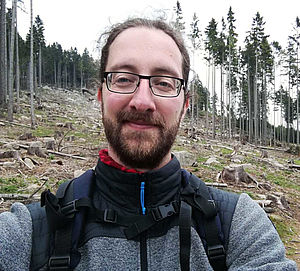Dr. Stefan WENAU
 in the MTU working group 2010-2019.
in the MTU working group 2010-2019.
Now at Fraunhofer IWES as Senior Scientist
Scientific interests
My research interests lie mainly with marine geoscientific applications of multichannel seismic methods as well as other acoustic methods.
| Fluid flow systems | Fluid migration, fault systems, pockmark formation, salt tectonics, seafloor seepage, gas hydrates | Lower Congo Basin, North Sea |
| Sedimentary systems | The impact of slope failures on sediment-ocean current interaction and resulting slope sedimentation | Namibia |
| Distribution of fluvial sediment input along a continental margin by ocean currents | Mozambique | |
| Water column acoustics | Acoustic gas bubble imaging, automatic detection | |
| Geophysical site surveys | Shallow seismic and acoustic imaging, Boulderdetection | North Sea, Baltic Sea |
Projects
2017-2019 | Boulderdetection | Boulders in the sub-surface represent important obstacles to offshore foundations for e.g. wind farms. The Boulderdetection project aims at developing new methods for the localization of such boulders in sub-seafloor depths of several tens of meters. The project is funded by the BMWi and located at the Faculty of Geosciences in cooperation with Fraunhofer IWES and industry partners. I am involved in developing new beamforming methods using standard seismic sources and available acquisition equipment suitable for sub-seafloor imaging. |
2014-2017 | IMGAM - Intelligentes Monitoring von klimaschädlichen CO2 / CH4 Gasaustritten im Meer | This BMWi project developed a new Autonomous Underwater Vehicle (AUV) that uses a multibeam echosounder to automatically image and localize gas bubble streams in the water column and also automatically samples the gas using an autoclave system. I mainly developed algorithms for the detection and localization of water column anomalies in multibeam echosounder data in order to localize the seep sites. |
2010-2014 | Fluid flow in the Lower Congo Basin | Dissertation within the GB project of MARUM: ‘Seismic and acoustic signatures of fluid seepage sites in different tectonic and sedimentary environments' |

